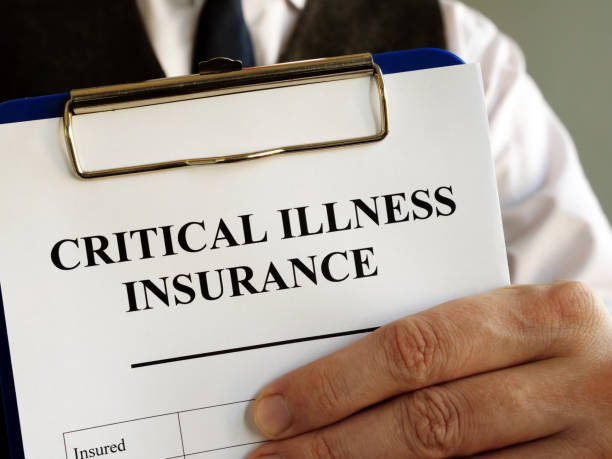Introduction
Critical illness insurance is an essential financial product designed to provide peace of mind and financial security in the face of serious health challenges. As medical advancements continue to increase survival rates for severe illnesses, the importance of being financially prepared for the associated costs cannot be overstated. This article delves into the intricacies of critical illness insurance, explaining its relevance, benefits, and the critical factors to consider when choosing a policy.

What is Critical Illness Insurance?
Critical illness insurance offers a lump sum benefit to policyholders diagnosed with specific serious illnesses. This financial safety net helps cover medical expenses, lost income, and other costs related to the illness, allowing individuals to focus on recovery rather than financial stress.
Importance of Critical Illness Insurance
The financial burden of a critical illness can be overwhelming. Even with health insurance, out-of-pocket expenses such as deductibles, copayments, and non-covered treatments can accumulate quickly. Critical illness insurance provides additional funds to cover these costs, ensuring that patients can afford the best possible care without depleting their savings or going into debt.
Types and Categories of Critical Illness Insurance
Basic Policies
Basic critical illness policies typically cover common severe illnesses such as cancer, heart attack, and stroke. These policies are straightforward and provide coverage for the most prevalent critical conditions.
Comprehensive Policies
Comprehensive policies offer broader coverage, including less common illnesses like multiple sclerosis, kidney failure, and major organ transplants. They provide a higher level of protection and peace of mind.
Condition-Specific Policies
These policies focus on a single illness, such as cancer-only or heart disease-only insurance. They are suitable for individuals with a family history or higher risk of a particular disease.
Symptoms and Signs of Covered Illnesses
Cancer
Common symptoms include unexplained weight loss, persistent fatigue, lumps, and changes in skin appearance. Early detection is crucial for successful treatment.
Heart Attack
Signs include chest pain, shortness of breath, sweating, and nausea. Immediate medical attention is essential to minimize heart damage.
Stroke
Symptoms include sudden numbness, confusion, trouble speaking, and severe headache. Rapid response can significantly improve recovery outcomes.
Kidney Failure
Indicators include decreased urine output, swelling in legs and ankles, fatigue, and shortness of breath. Early intervention can slow disease progression.
Causes and Risk Factors
Biological Factors
Genetics play a significant role in the risk of developing critical illnesses. Family history can increase the likelihood of conditions like cancer and heart disease.
Environmental Factors
Exposure to pollutants, chemicals, and radiation can contribute to the development of critical illnesses. Lifestyle choices such as smoking and excessive alcohol consumption also play a role.
Lifestyle Factors
Poor diet, lack of exercise, and chronic stress are major contributors to the development of serious health conditions. Maintaining a healthy lifestyle can significantly reduce these risks.

Diagnosis and Tests
Cancer
Diagnostic tools include biopsies, imaging tests (MRI, CT scans), and blood tests. Early detection through regular screenings improves treatment success rates.
Heart Attack
Diagnosis is typically confirmed through electrocardiograms (ECG), blood tests for cardiac enzymes, and imaging tests like echocardiograms.
Stroke
CT scans, MRIs, and carotid ultrasounds are commonly used to diagnose strokes. Prompt imaging is crucial to determine the type of stroke and appropriate treatment.
Kidney Failure
Blood tests measuring creatinine and blood urea nitrogen (BUN), along with urine tests, help diagnose kidney failure. Imaging tests and biopsies may also be used.
Treatment Options
Medical Treatments
Standard treatments for critical illnesses include surgery, chemotherapy, radiation therapy, and medications. Each treatment plan is tailored to the specific illness and patient condition.
Therapies
Physical therapy, occupational therapy, and speech therapy are often required during recovery. These therapies help patients regain function and improve quality of life.
Lifestyle Adjustments
Adopting a healthier lifestyle, including a balanced diet, regular exercise, and stress management, is crucial for recovery and preventing recurrence of the illness.
Preventive Measures
Regular Screenings
Early detection through regular medical check-ups and screenings is vital. Preventive screenings can identify potential health issues before they become critical.
Healthy Lifestyle
Maintaining a balanced diet, exercising regularly, avoiding smoking, and limiting alcohol intake significantly reduce the risk of developing severe health conditions.
Vaccinations
Vaccinations against diseases like hepatitis and HPV can prevent infections that might lead to critical illnesses such as liver cancer.
Personal Stories and Case Studies
Real-Life Examples
Sharing personal stories of individuals who have benefited from critical illness insurance highlights its importance. These stories illustrate the financial and emotional relief provided by the coverage.
Lessons Learned
Analyzing case studies helps understand the practical applications and benefits of critical illness insurance, offering valuable insights into its impact on real lives.

Expert Insights
Medical Professionals
Quotes and advice from doctors and healthcare professionals underscore the importance of critical illness insurance. Their expertise provides credibility and reinforces the message.
Financial Advisors
Financial experts can offer insights into selecting the right policy, understanding coverage options, and integrating critical illness insurance into a comprehensive financial plan.
Conclusion
Critical illness insurance is a vital component of a robust financial plan, providing essential support during some of life’s most challenging moments. By understanding its benefits, coverage options, and the critical illnesses it addresses, individuals can make informed decisions to protect their financial future and focus on recovery.



